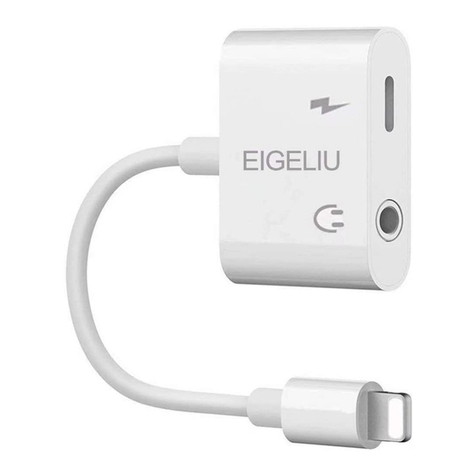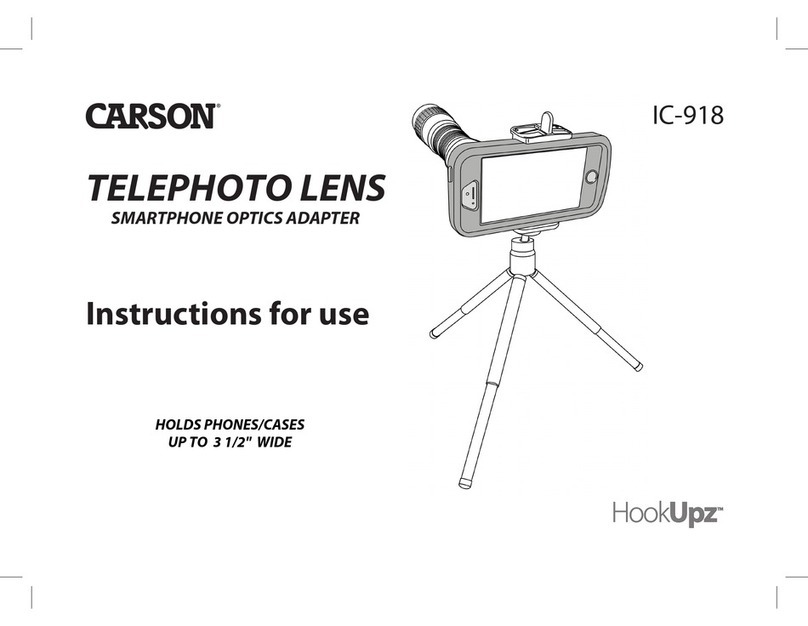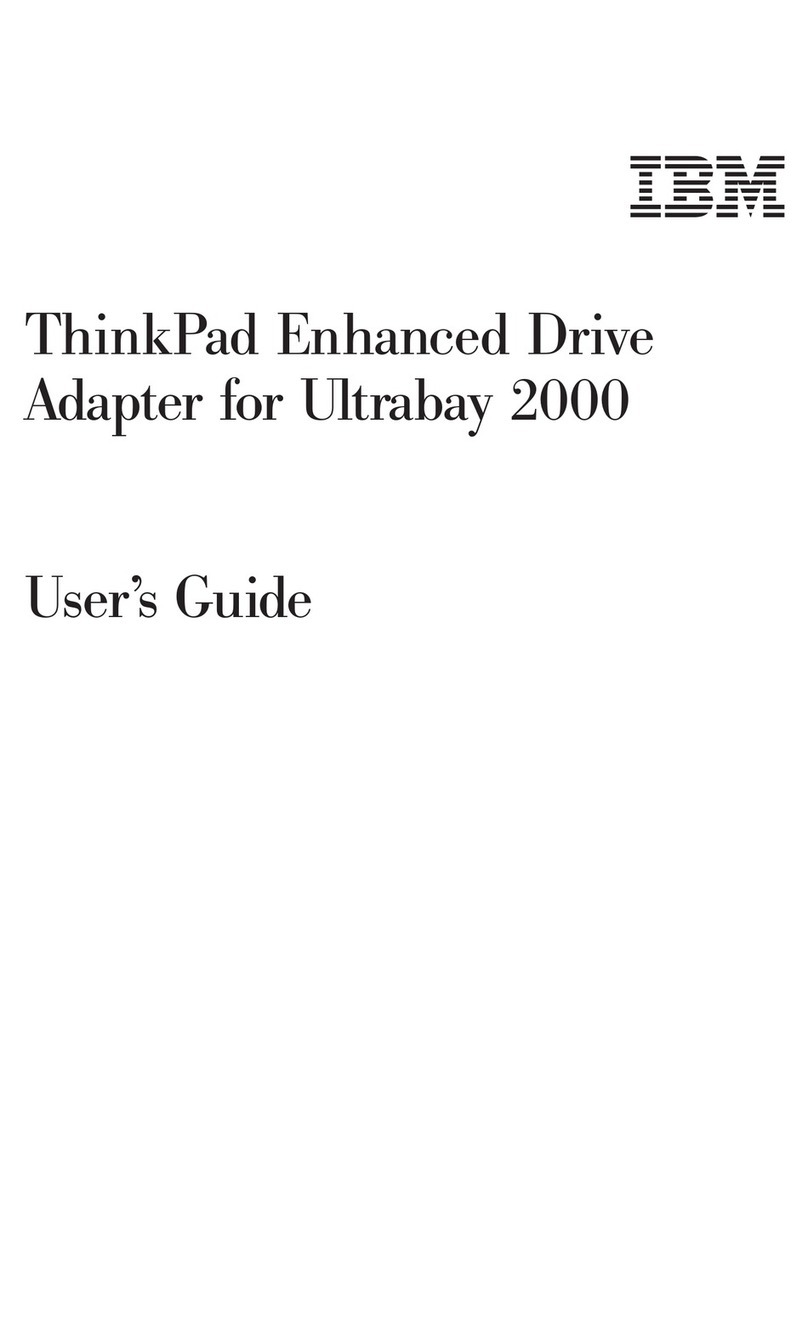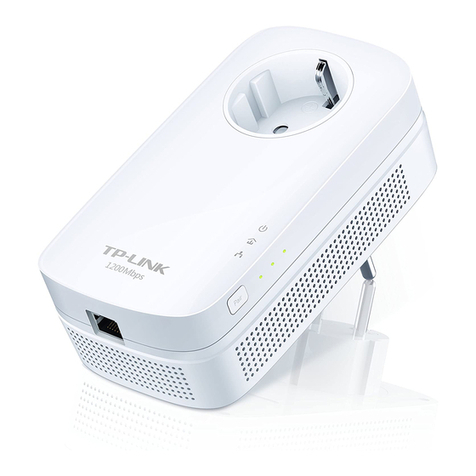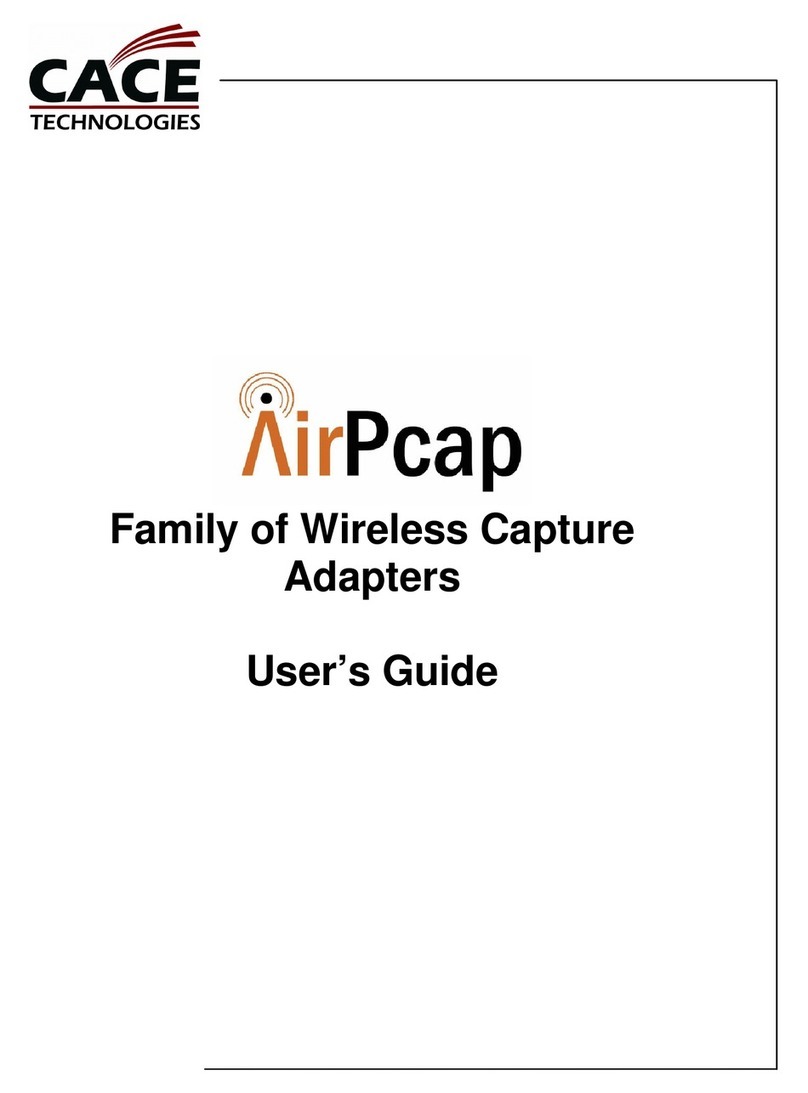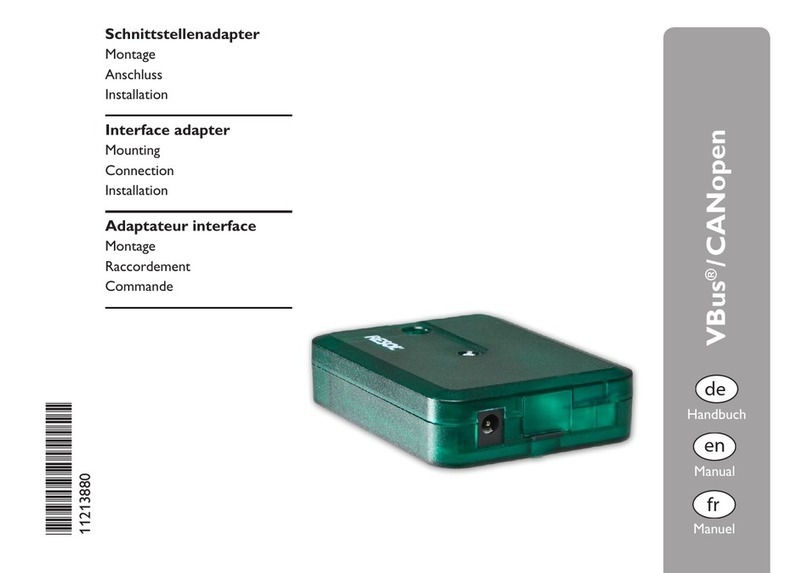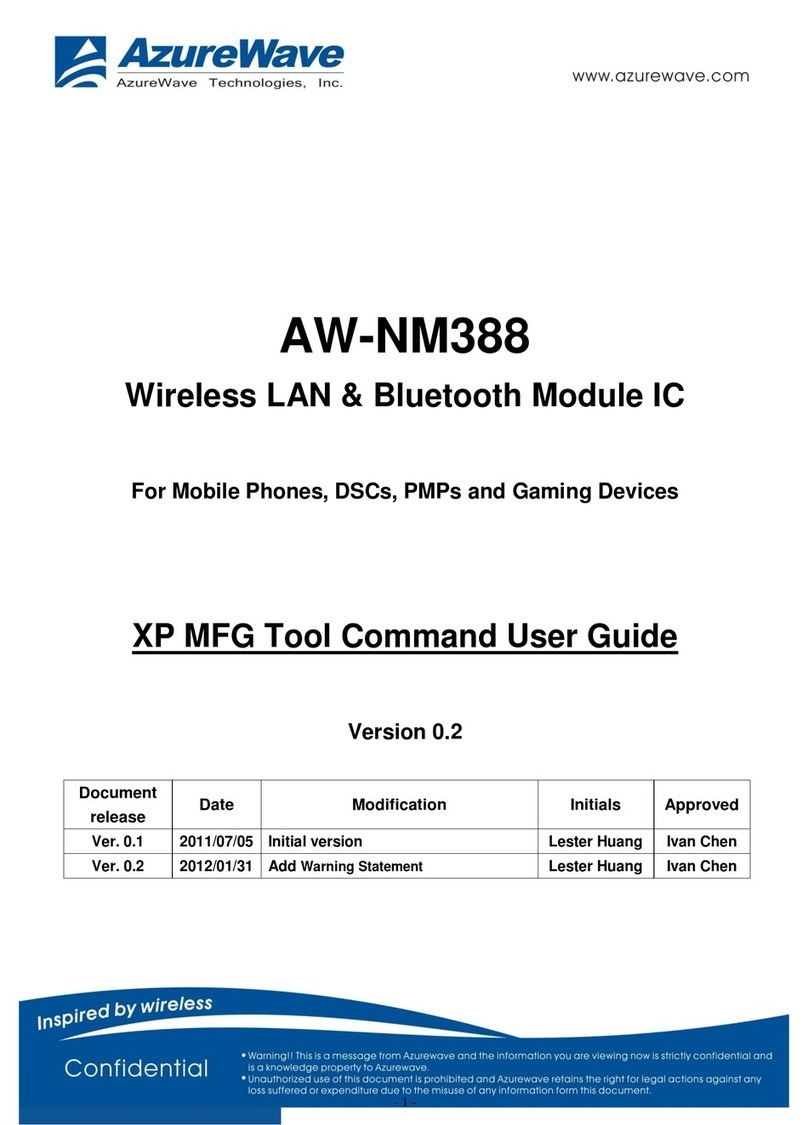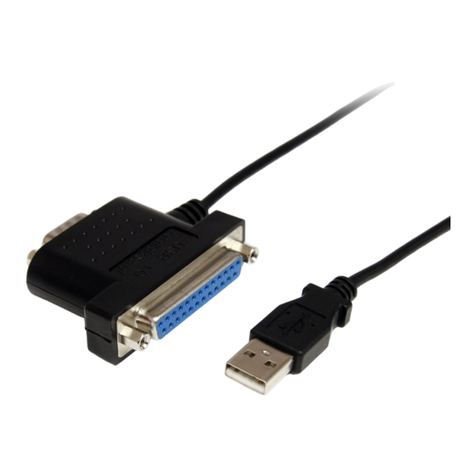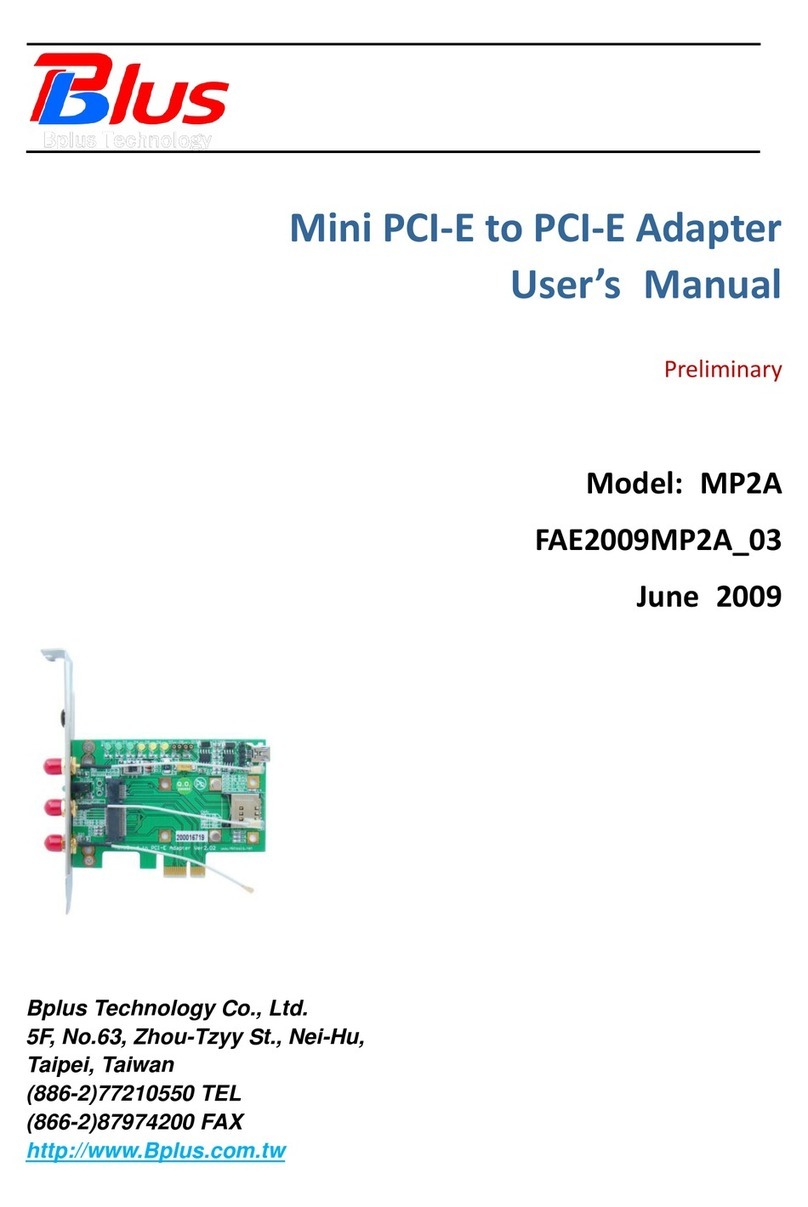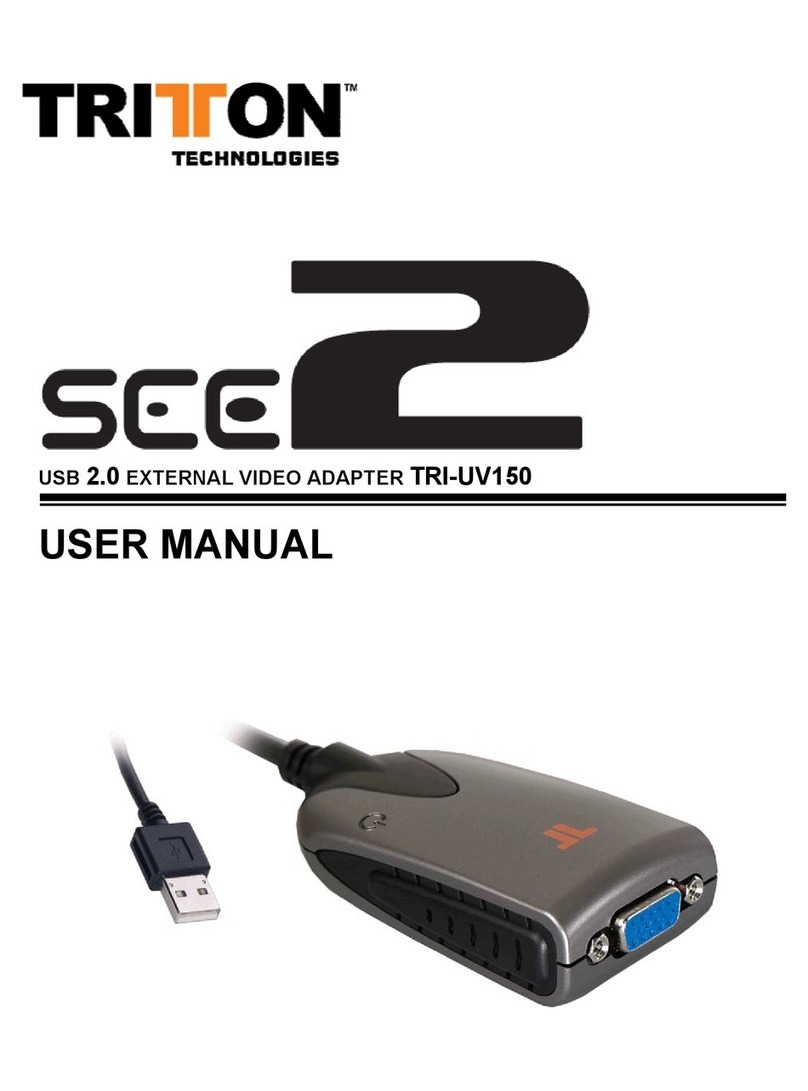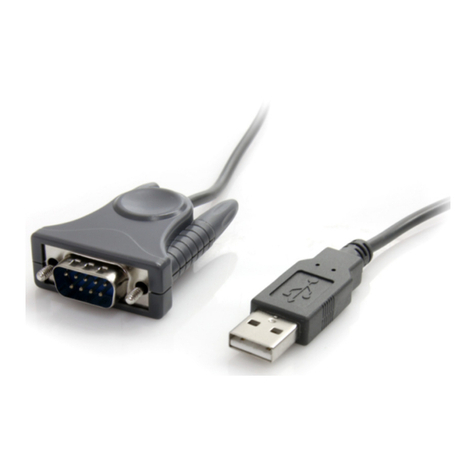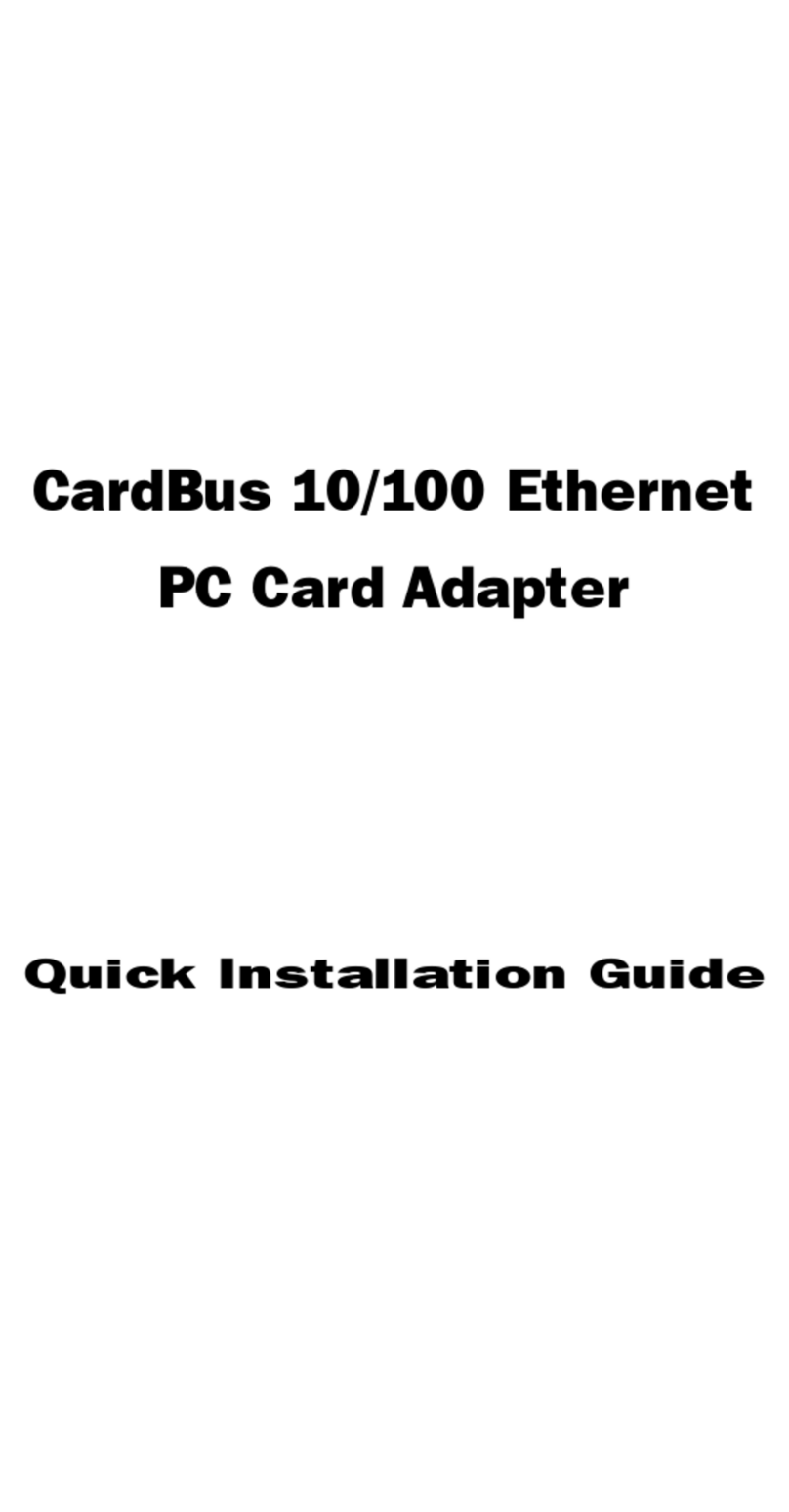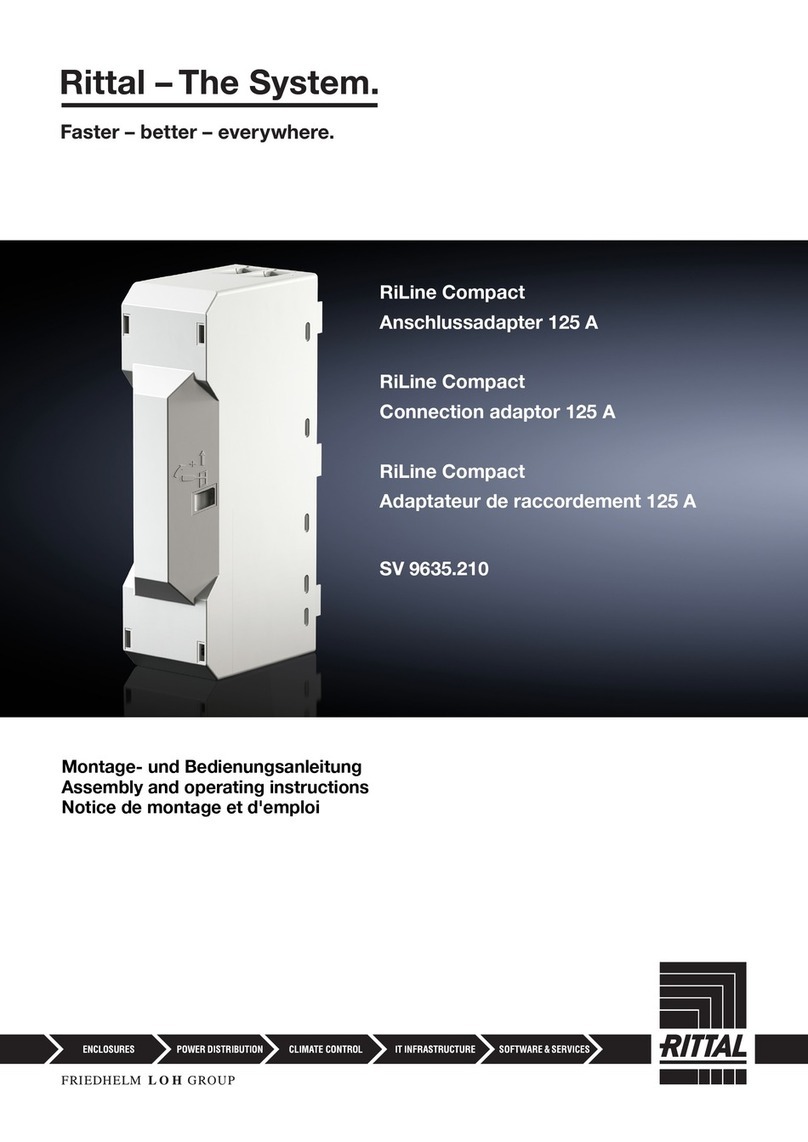ACS Marvair CommStat 4 User manual

CommStat™ 4
Modbus Interface Adapter
Installation and Operation Manual
Manufactured By:
Marvair®, An AirX Climate Solutions Brand
P.O. Box 400 • Cordele, Georgia 31010
156 Seedling Drive • Cordele, Georgia 31015
(229) 273-3636 • Fax (229) 273-5154
E-mail: [email protected] • Internet: www.marvair.com
The most current version of this manual can be found at www.marvair.com.
P/03272
12/2021 rev.5
Modbus RTU

CommStat4 Modbus Interface I&O
Manual
12/2021 rev
.
5
This manual describes the steps to install and operate the Marvair® CommStat™ 4 Modbus Interface Adapter. This
device provides both Ethernet and serial interfaces to allow a remote system to read and write parameters to the
CommStat™ 4 controller through the Modus TCP or Modbus RTU communications protocol.
The following materials are provided in the Modbus Interface Adapter package:
• Modbus Interface Adapter device
• Installation and Operations Manual (this manual)
The following materials should be provided by the installer:
• Laptop with Windows 7, 8, or 10 to configure the IP address of the Modbus Interface Adapter
• Mechanical and electrical installation hand tools (wire cutters & strippers, drill, drill bits)
Important Safety Information
1. Turn Electrical Power OFF at the breaker or fuse box BEFORE installing or working on the Modbus adapter. LINE
VOLTAGES ARE HAZARDOUS or LETHAL.
2. OBSERVE and COMPLY with ALL applicable ELECTRICAL AND BUILDING CODES and ORDINACES.
3. INSTALLATION and SERVICE should be performed ONLY by QUALIFIED and EXPERIENCED PEOPLE.
4. USE COMMON SENSE and BE SAFETY CONSCIOUS.
This is the safety alert symbol. When you see this symbol in the manual, be alert to the potential for personnel
injury or equipment damage. Understand the signal word DANGER, WARNING and CAUTION. These words are
used to identify levels of the seriousness of the hazard.
DANGER
Failure to comply will result in death or severe personal injury and/or property damage.
WARNING
Failure to comply could result in death or severe personal injury and/or property damage.
CAUTION
Failure to comply could result in minor personal injury and/or property damage.
IMPORTANT is used to point out helpful suggestions that will result in improved installation, reliability or operation.
Confidentiality:
This document and the information contained in it are confidential and are the property of Marvair®. It may not in
any way be disclosed, copied or used by anyone except as expressly authorized by Marvair®. The document should
always be kept in a secure place and should be destroyed or returned to Marvair® when it is no longer needed. Not
for use or disclosure, except under written agreement. © 2021 Marvair® Proprietary. All rights reserved.
SPECIFICATIONS SUBJECT TO CHANGE WITHOUT NOTICE.
© 12/2021 Marvair®, An AirX Climate Solutions Brand

CommStat™ 4
Modbus Adapter
Installation & Operation
Page 3
General Description
The self-contained Marvair® Modbus Interface Adapter provides an Ethernet or a serial gateway to the
Marvair CommStat™ 4 HVAC controller through which an external host can read and write information
from the CommStat 4 as if it were a Modbus TCP or Modbus RTU device. It is powered by 24VDC or
48VDC. The external host located, for example, within a Network Operations Center (NOC), can monitor
and control the operation of the HVAC units connected to the CommStat 4 controller. The adapter supports
CommStat 4 controllers with protocol version 3 or later with software revision 67 or later.
The adapter includes (see figure 1):
• Flange-mount enclosure with the interface adapter
• 15ft (457cm) two-conductor power cable
• 15ft (457cm) RJ11 cable for connection to the CommStat4 unit
• 15ft (457cm) Cat5e cable for Modbus TCP connection to the external monitoring system
• 15ft (457cm) Serial cable for Modbus RTU connection to the external monitoring system
Installation
The adapter can be mounted at any convenient location within the shelter. Mounting ears with pre-drilled
holes are provided on the base of the adapter to allow it to be installed directly on a shelter wall or within
an equipment enclosure. The Cat5e Ethernet, serial communication, CommStat 4 communication, and
power cables supplied with the adapter are each 15ft. (457cm) in length. The adapter should be mounted
to ensure that the distance from end connection points to the adapter does not exceed 15ft. (457cm)
including all necessary conduit routing. Note that the adapter must be installed inside the shelter; it is not
suitable for installation either inside an HVAC unit or where exposure to external weather is possible. The
adapter is installed as follows:
• Mount the adapter inside the shelter using the four pre-drilled screw holes on the adapter base.
• Run the two-conductor power cable (grey insulation) to a suitable DC power source. The adapter
can be powered by 24VDC or 48VDC. The black wire is +24/48VDC and the white is VDC RTN.
• Remove the lower cover from the CommStat 4 controller. Plug the RJ11 connector on the flat, black
CommStat 4 communications cable into one of the two Master communications ports at the middle,
bottom of the CommStat 4 circuit board. Note that if the shelter has two CommStat 4 controllers,
one of these ports may already be used for the master/slave connection. Reinstall the lower cover
of the CommStat 4 controller. See Figure 3.
• Remove the six screws from the cover of the adapter then remove the cover. Turn the breaker on
the power feed circuit to the On position and verify that the red LED on the processor board is On.
If the red LED is not On, turn the power feed circuit breaker to the Off position, swap the black and
white wires at the DC power source, then turn the breaker to the On position. The red power LED
will now be On. See Figure 2. Reinstall the cover.
DO NOT make the power connections with power applied to the feed circuit. This can create electrical
arcing and cause permanent damage to the circuit boards. ALWAYS make electrical connections with the
feed circuit breaker in the Off position and after verifying the absence of voltage with a meter.

CommStat™ 4
Modbus Adapter
Installation & Operation
Page 4
Figure 1: Modbus Interface Adapter External Connections
Figure 2: Modbus Interface Adapter Power LED

CommStat™ 4
Modbus Adapter
Installation & Operation
Page 5
Figure 3: CommStat™ 4 to Modbus Interface Adapter Connection
IP Address Configuration
The adapter has a default static IP address of 192.168.1.19. If a different IP address is required a laptop
can be used to re-configure the adapter. In order to establish communications, the laptop must have and
IP address within the same subnet as the adapter. The laptop will be assigned the temporary static IP
address of 192.168.1.100. From the Windows desktop select Start, Control Panel, Network and Sharing
Center:
Figure 4: Network and Sharing Center

CommStat™ 4
Modbus Adapter
Installation & Operation
Page 6
Click Change adapter settings:
Figure 5: Network and Sharing Center
Right-click on the Local Area Connection and select Properties from the drop down menu:
Figure 6: Local Area Connection Properties

CommStat™ 4
Modbus Adapter
Installation & Operation
Page 7
Click Internet Protocol Version 4 (TCP/IPv4) then click the Properties key:
Figure 7: Internet Protocol Version 4 (TCP/IPv4) Properties
If there are values in any of the IP address fields on this screen, record these addresses prior to
implementing any changes so that the original values can be restored after the adapter has been updated.
Click Use the following IP address and enter 192.168.1.100 in the IP address field and 255.255.255.0
in the Subnet mask field. Do not enter any values into any of the other IP address fields. The properties
page should look like the following:
Figure 8: Internet Protocol Version 4 (TCP/IPv4) Properties
Click the OK key to accept the changes and close the Internet Protocol Version 4 (TCP/IPv4) Properties
page. Click the Close key to accept the changes and close the Local Area Connection Properties page.
Finally, close the Network and Sharing Center window to return to the desktop.

CommStat™ 4
Modbus Adapter
Installation & Operation
Page 8
Plug the Ethernet cable from the adapter into the RJ45 port of the laptop. Open an Internet browser (Internet
Explorer, Chrome, Firefox, Safari) and type http://192.168.1.19 into the address bar. The adapter network
configuration page will then be displayed. Select either DHCP or Static IP address configuration and, if
static, complete the IP Address, Subnet Mask, and Default Gateway fields. Press the Save pushbutton to
accept the configuration changes. The adapter will reboot and after 60 seconds the new network
configuration will be active. Note that if the new network parameters are on a different subnet, the browser
will lose communications to the adapter after the reboot.
Figure 9: Adapter Network Configuration Page
If the network status of the adapter is unknown, the IP address fields can be reset. With power applied to
the adapter, press the Reset Network Settings push button on the underside of the top right-hand corner of
the main circuit board (see figure 10). The adapter will restart and its IP address will revert to the default
value of 192.168.1.19 after approximately one minute.
Figure 10: Reset Network Settings Push Button

CommStat™ 4
Modbus Adapter
Installation & Operation
Page 9
CommStat™ 4 Modbus Read Registers
The adapter supports Modbus TCP/IP read requests from the Master system through port 502 of the configured IP address of the interface adapter.
The read registers are detailed in the table below.
Register
Source
Value
Description
Comments
40001
Master
Master's firmware revision number
[Self-explanatory]
Must be less than 255
40002
Master
Protocol Version Number (3 or 4)
[Self-explanatory]
[Self-explanatory]
40003
Master
Setting #2
F/C
0: Celsius, 1: Fahrenheit
40004
Master
Setting #3
Changeover days
Half Days, range 1 to 14
40005
Master
Setting #4
Cool set point
See CommStatTM 4 manual
40006
Master
Setting #5
Heat set point
See CommStatTM 4 manual
40007
Master
Setting #6
High building temp 1 set point
See CommStatTM 4 manual
40008
Master
Setting #7
High building temp 2 set point
See CommStatTM 4 manual
40009
Master
Setting #8
Low building temp set point
See CommStatTM 4 manual
40010
Master
Setting #9
Blower on
0: Off, 1: On
40011
Master
Setting #10
High voltage input enable / alarm output enable
40012
Master
Setting #11
Anti-short cycle timer
Number of minutes (see CommStatTM 4 manual)
40013
Master
Setting #12
Stage 1 Differential
See CommStatTM 4 manual
40014
Master
Setting #13
Stage 2 differential
See CommStatTM 4 manual
40015
Master
Setting #14
Off differential
See CommStatTM 4 manual
40016
Master
Setting #15
Blower off time delay
See CommStatTM 4 manual
40017
Master
Setting #16
Operational units when generator is used
[Self-explanatory]
40018
Master
Setting #17
Smoke auto reset
0: Manual Reset, 3 to 10: # minutes until auto reset
40019
Master
Setting #18
Smoke relay
0: Normally Open, 1: Normally Closed
40020
Master
Setting #19
ECON mode enable
0: No, 1: Yes, 2: Verizon special setting
40021
Master
Setting #20
Multiple sensors
0: No, 1: Yes
40022
Master
Setting #21
Aux. 1 relay
0: Normally Open, 1: Normally Closed, 2: Off
40023
Master
Setting #22
Aux. 2 relay
0: Normally Open, 1: Normally Closed, 2: Off
40024
Master
Setting #23
Excessive cycle
0: Off, Non-Zero: # cycles allowed in 2 hour period
40025
Master
Setting #24
Language
0: English, 1: Spanish, 2: French
40026
Master
Setting #25
AC / HP system
0: HP, 1: One AC, 2: Two AC
40027
Master
Setting #26
Master/slave
0: Slave, 1: Master
40028
Master
Setting #27
Stage 3 differential
See CommStatTM 4 manual
40029
Master
Setting #28
Stage 4 differential
See CommStatTM 4 manual
40030
Master
Setting #29
Stage 5 differential
See CommStatTM 4 manual
40031
Master
Setting #30
Stage 6 differential
See CommStatTM 4 manual
Table 1: CommStat™4 Modbus Read Registers

CommStat™ 4
Modbus Adapter
Installation & Operation
Page 10
Register
Source
Value
Description
Comments
40032
Master
Setting #31
Stage 7 differential
See CommStatTM 4 manual
40033
Master
Setting #32
Stage 8 differential
See CommStatTM 4 manual
40034
Master
Setting #33
Stage 9 differential
See CommStatTM 4 manual
40035
Master
Setting #34
Stage 10 differential
See CommStatTM 4 manual
40036
Master
Setting #35
Stage 11 differential
See CommStatTM 4 manual
40037
Master
Setting #36
Stage 12 differential
See CommStatTM 4 manual
40038
Master
Setting #37
Total Number of Units
See CommStatTM 4 manual
40039
Master
Setting #38
Stage 2 differential in econ cooling mode
See CommStatTM 4 manual
40040
Master
Controller On/Off
Whether the controller is in on or off mode
0 :Off, 1: On
40041
Master
Lead unit
Which unit is the lead unit
0: Master #1, 1: Master #2, 2: Slave #1, 3: Slave #2
40042
Master
Password #1
First byte of the password
Password = (password #1 * 4) + password #2
40043
Master
Password #2
Second byte of the password
Password = (password #1 * 4) + password #2
40044
Master
Master controller inputs
Master's status of smoke, hydrogen, gen, aux #1, aux #2
See note 1
40045
Master
Master controller's unit #1 inputs
Master's unit #1 voltage, lockout, econ mode status
See note 2
40046
Master
Master controller's unit #2 inputs
Master's unit #2 voltage, lockout, econ mode status
See note 2
40047
Master
Master controller's unit #1 outputs
[Self-explanatory]
See note 3
40048
Master
Master controller's unit #2 outputs
[Self-explanatory]
See note 3
40049
Master
Output command master to slave unit #1
[Self-explanatory]
See note 3
40050
Master
Output command master to slave unit #2
[Self-explanatory]
See note 3
40051
Master
Saved value of master unit #1 outputs
[Self-explanatory]
Internal Use
40052
Master
Saved value of master unit #2 outputs
[Self-explanatory]
Internal Use
40053
Master
Saved value command master to slave unit #1
[Self-explanatory]
Internal Use
40054
Master
Saved value command master to slave unit #2
[Self-explanatory]
Internal Use
40055
Master
Master controller lockout status
[Self-explanatory]
See note 4
40056
Master
Current stage
[Self-explanatory]
See note 5
40057
Master
Current temperature
[Self-explanatory]
240: sensor fault, < 240: current temperature
40058
Master
Time left for the comfort mode operation.
[Self-explanatory]
#minutes left in comfort mode / 3
40059
Slave
Slave embedded firmware revision number
[Self-explanatory]
Must be less than 255
40060
Slave
Slave controller inputs
Slave’s status of smoke, hydrogen, gen, aux #1, aux #2
See note 1
40061
Slave
Slave controller's unit #1 inputs
Slave's unit #1 voltage, lockout, econ mode status
See note 2
40062
Slave
Slave controller's unit #2 inputs
Slave's unit #2 voltage, lockout, econ mode status
See note 2
40063
Slave
Slave's #1 temp sensor reading
[Self-explanatory]
0: sensor fault, 30 – 150: current temperature (F)
40064
Slave
Slave's #2 temp sensor reading
[Self-explanatory]
0: sensor fault, 30 – 150: current temperature (F)
40065
Slave
Slave's #3 temp sensor reading
[Self-explanatory]
0: sensor fault, 30 – 150: current temperature (F)
40066
Slave
Slave's unit #1 output status
[Self-explanatory]
See note 3
40067
Slave
Slave's unit #2 output status
[Self-explanatory]
See note 3
40068
Slave
Slave controller lockout status
[Self-explanatory]
See note 6
Table 1: CommStat™4 Modbus Read Registers

CommStat™ 4
Modbus Adapter
Installation & Operation
Page 11
Notes:
Note
Description
1
Bit<7:5> are always clear;
if bit<4> is set, controller senses smoke;
if bit<3> is set, controller senses high hydrogen level;
if bit<2> is set, controller senses generator being used;
if bit<1> is set, controller senses aux 1 signal present;
if bit<0> is set, controller senses aux 2 signal present.
2
Bit<7:5> are always clear;
if bit<4> is set, this unit has 24V present;
if bit<3> is set, this unit has 230V present;
if bit<2> is set, this unit is locked out;
if bit<1> is set, this unit is operating in AC mode;
if bit<0> is set, this unit is operating in economizer mode.
[Note] If bit<1:0> are clear, it is undetermined whether this unit is operating in AC or economizer mode.
3
Bit<7> is always clear;
if bit<6> is set, this unit is outputting to Y;
if bit<5> is set, this unit is outputting to 2;
if bit<4> is set, this unit is outputting to O;
if bit<3> is set, this unit is outputting to W;
if bit<2> is set, this unit is outputting to G;
if bit<1> is set, this unit is outputting to MAR;
if bit<0> is set, this unit is outputting to DCAMR.
4
If bit<7> is set, master controller is in high building temp 2 lockout;
if bit<6> is set, master controller is in high building temp 1 lockout;
if bit<5> is set, master controller is in low building temp lockout;
if bit<4> is set, master controller is in smoke alarm lockout;
if bit<3> is set, slave controller's unit #2 is in lockout;
if bit<2> is set, slave controller's unit #1 is in lockout;
if bit<1> is set, master controller's unit #2 is in lockout;
if bit<0> is set, master controller's unit #1 is in lockout.
[Note] High temp building temp lockout and low building temp lockout are mutually exclusive.

CommStat™ 4
Modbus Adapter
Installation & Operation
Page 12
Notes:
Note
Description
5
If value is 0, it is in stage 12 cooling;
if value is 1, it is in stage 11 cooling;
if value is 2, it is in stage 10 cooling;
if value is 3, it is in stage 9 cooling;
if value is 4, it is in stage 8 cooling;
if value is 5, it is in stage 7 cooling;
if value is 6, it is in stage 6 cooling;
if value is 7, it is in stage 5 cooling;
if value is 8, it is in stage 4 cooling;
if value is 9, it is in stage 3 cooling;
if value is 10, it is in stage 2 cooling;
if value is 11, it is in stage 1 cooling;
if value is 12, it is in stage 0;
if value is 13, it is in stage 1 heating;
if value is 14, it is in stage 2 heating;
if value is 15, it is in stage 3 heating;
if value is 16, it is in stage 4 heating.
6
If bit<7> is set, slave controller is in high building temp 2 lockout;
if bit<6> is set, slave controller is in high building temp 1 lockout;
if bit<5> is set, slave controller is in low building temp lockout;
if bit<4> is set, slave controller is in smoke alarm lockout;
if bit<3> is set, slave controller's unit #2 is in lockout;
if bit<2> is set, slave controller's unit #1 is in lockout;
if bit<1> is set, master controller's unit #2 is in lockout;
if bit<0> is set, master controller's unit #1 is in lockout.
[Note] High temp building temp lockout and low building temp lockout are mutually exclusive.

CommStat™ 4
Modbus Adapter
Installation & Operation
Page 13
CommStat™ 4 Modbus Write Registers
The adapter supports Modbus TCP/IP write requests from the Master system through port 502 of the configured IP address of the interface adapter.
The write registers are detailed in the table below.
Register
Source
Value
Description
40101
Remote
Write Control
See write procedure below
40102
Remote
Setting #2
F/C
40103
Remote
Setting #3
Changeover days
40104
Remote
Setting #4
Cool set point
40105
Remote
Setting #5
Heat set point
40106
Remote
Setting #6
High building temp 1 set point
40107
Remote
Setting #7
High building temp 2 set point
40108
Remote
Setting #8
Low building temp set point
40109
Remote
Setting #9
Blower on
40110
Remote
Setting #10
High voltage input enable / alarm output enable
40111
Remote
Setting #11
Anti-short cycle timer
40112
Remote
Setting #12
Stage 1 Differential
40113
Remote
Setting #13
Stage 2 differential
40114
Remote
Setting #14
Off differential
40115
Remote
Setting #15
Blower off time delay
40116
Remote
Setting #16
Operational units when generator is used
40117
Remote
Setting #17
Smoke auto reset
40118
Remote
Setting #18
Smoke relay
40119
Remote
Setting #19
ECON mode enable
40120
Remote
Setting #20
Multiple sensors
40121
Remote
Setting #21
Aux. 1 relay
40122
Remote
Setting #22
Aux. 2 relay
40123
Remote
Setting #23
Excessive cycle
40124
Remote
Setting #24
Language
40125
Remote
Setting #25
AC / HP system
40126
Remote
Setting #26
Master/slave
40127
Remote
Setting #27
Stage 3 differential
40128
Remote
Setting #28
Stage 4 differential
40129
Remote
Setting #29
Stage 5 differential
40130
Remote
Setting #30
Stage 6 differential
Table 2: CommStat™4 Modbus Write Registers

CommStat™ 4
Modbus Adapter
Installation & Operation
Page 14
Register
Source
Value
Description
40131
Remote
Setting #31
Stage 7 differential
40132
Remote
Setting #32
Stage 8 differential
40133
Remote
Setting #33
Stage 9 differential
40134
Remote
Setting #34
Stage 10 differential
40135
Remote
Setting #35
Stage 11 differential
40136
Remote
Setting #36
Stage 12 differential
40137
Remote
Setting #37
Total Number of Units
40138
Remote
Setting #38
Stage 2 differential in econ cooling mode
40139
Remote
Controller On/Off
Whether the controller should be on or off
40140
Remote
Lead unit
Which unit should be the lead unit
40141
Remote
Password #1
First byte of the password
40142
Remote
Password #2
Second bytes of the password
40143
Remote
Function code
The purpose of this communication signal
Table 2: CommStat™4 Modbus Write Registers
The process to update parameters in the CommStat 4 unit is controlled through the use of register 40101. The sequence of operation and the
corresponding values for register 40101 are as follows:
Register 40101 Value
Description
0
Normal operation, current parameter values are copied to “new parameter values” registers each cycle
Remote Client Writes 1
Adapter stops copying current parameter values to “new parameter values” registers each cycle allowing
the remote client to make updates to selected parameters
Remote Client Writes 2
Instructs adapter to write “new parameter values” to CommStatTM 4 at the next available cycle
Adapter Writes 3
Adapter indicates confirmation of write request and waiting for write cycle completion
Adapter Writes 0
Adapter indicates completion of write to CommStatTM 4

CommStat™ 4
Modbus Adapter
Installation & Operation
Page 15
Technical Specifications
Electrical
Voltage: 24VDC to 60VDC (nominal 24VDC or 48VDC)
Current: 1A typical
Environmental
Temperature: -30C (-22F) to 70C (158F)
Relative Humidity: 0% to 95%, non-condensing
Mechanical
Dimensions: 10.00 inches x 6.00 inches x 3.00 inches (25.40 cm x 15.24 cm x 7.62 cm)
Weight: 1.37 lbs (0.62 kg)
Construction Material: POLYLAK® PA-765 ABS Thermoplastic (flammability rating UL94-5VA)
External Connections
Power Supply Terminal Block
The two-position power input terminal block has the following connections:
Wire Color
Label
Description
Black
V+
Power Input
White
COM
Power Return
Figure 11: Power Input Terminal Block Connections
Modbus RTU Interface Terminal Block
The two-position CommStat™ 4 interface terminal block has the following connections:
Wire Color
Label
Description
Black
A
RS-485 RX/TX A
White
B
RS-485 RX/TX B
Figure 12: Modbus RTU Interface Terminal Block Connections
The preset Modbus RTU serial configuration is 9600, N, 8, 1.

CommStat™ 4
Modbus Adapter
Installation & Operation
Page 16
CommStat™ 4 Interface RJ11 Connector
The female RJ11 socket CommStat™ 4 interface terminal block has the following pinout:
Pin
Label
1
NC
2
Ground
3
RS-485 RX/TX A
4
RS-485 RX/TX B
5
VCC
6
NC
Figure 13: RJ11 Connector Pinout
Ethernet RJ45 Connector
The female RJ45 socket provides the Ethernet connection for the Master system. The pinout for this
connector supports the TIA/EIA T568B standard where the individual pin assignments are:
Pin
Label
1
RD+
2
RD-
3
TD+
4
NC
5
NC
6
TD-
7
NC
8
NC
Figure 14: RJ45 Connector Pinout

CommStat™ 4
Modbus Adapter
Installation & Operation
Page 17
Dimensional Drawings
Figure 15: Adapter Enclosure Dimensions-1

CommStat™ 4
Modbus Adapter
Installation & Operation
Page 18
Figure 16: Adapter Enclosure Dimensions-2
Table of contents


